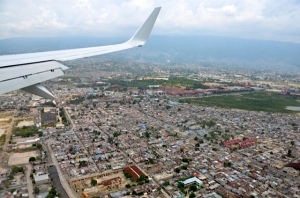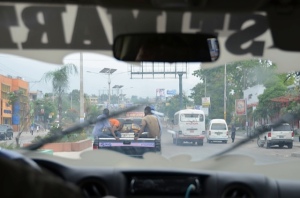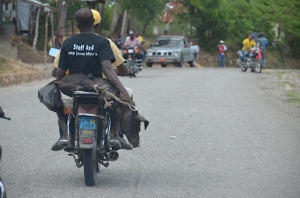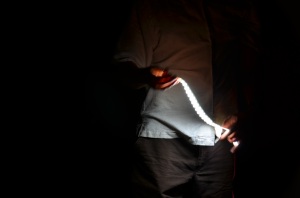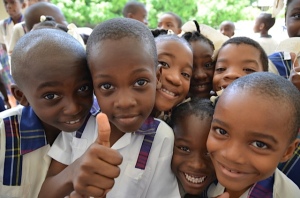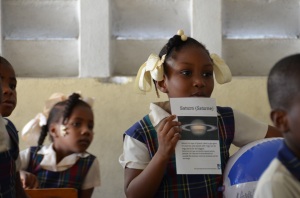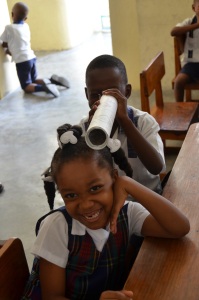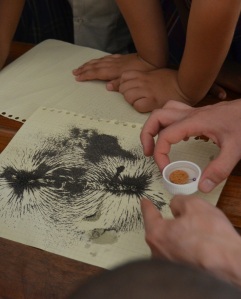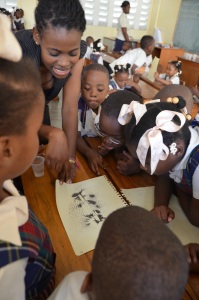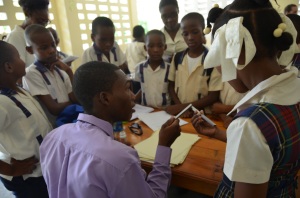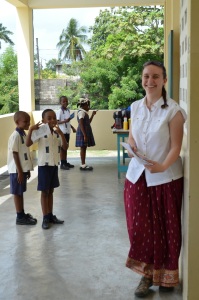From the air, Haiti looks very different to Massachusetts. On the flight to Port-au-Prince, the deep blues of New England and mid-Atlantic coastlines give way to the turquoise waters of the Caribbean.

The color and clarity of these waters is enviable, yet approaching Haiti, one sees a flaw: a muddy ring that hugs the coastline. It is an indicator of the challenges Haitians face, both environmentally, and in their daily lives.
Haiti, like all third world countries, is unique. It has its own history, from colonization to exploitation, from slavery to freedom. It is, and has always been, a complicated place, and at the heart of its troubles lays poverty. Poverty and lack of infrastructure mean limited access to electricity, and a population that must rely on charcoal to cook their daily meals. Deforestation to meet demand for charcoal has resulted in erosion, muddying the coastline and causing rivers to flow out of control. Fifty years ago, 60% of Haiti was forested. The figure now stands at 1%.

This too is visible from the air. Where Haiti’s neighbor, the Dominican Republic, is lush with foliage, large swatches of the Haitian countryside lay bare.
Touching down in Port au Prince, the sun beats down on tin roofs. They are flat and leaning, grey or rust colored. By western standards, the homes are lean-tos more than houses, constructed out of whatever is at hand. There is no separation between structures, and homes are built with as many shared walls as possible. They are uneven, flimsy. “It’s not that people don’t understand how to built proper housing,” our team leader explained, “It’s just that they can’t afford it.”
Disembarking, the airport was abuzz with activity. A steel drum band played and there was laughter and dancing as families reunited with loved ones. It was a pleasant scene, but we couldn’t linger. Young men rushed in to assist us with our bags and direct us towards drivers. There is little employment in Haiti, and the men were looking make money. While we couldn’t blame them, we didn’t want to be beholden to them either.

We made it through and found our driver. Piled into the mini van, we gave a sigh of relief as the door slid shut on the noisy scene in the parking lot.
With no streetlights or signs, and roads teeming with people, driving in Haiti is its own form of adventure. There is little in the way of brick and mortar stores and public buildings, as they require electricity. For most Haitians, shopping, business, and social activities take place in the street.

As we drove, we saw automobiles piled high with people, hanging on the bumpers and roofs. A man on a motorcycle had a large pig strapped to the back. As the van idled, we wondered if the pig was alive; then we heard it oinking. With no reliable means of refrigeration, livestock is kept alive until the last possible moment.
We drove for several hours to reach Les Cayes. In every place we stopped along the way, people rushed the van windows, trying to sell things. Most often, it was water. DON’T DRINK IT we were told, it could make us very ill; there is no telling where it came from. Most Haitians do not have reliable access to clean water. So it is in Haiti, truth and struggle are revealed in each experience and encounter, and piled together, these needs can seem overwhelming.
From afar, and up close, there are problems everywhere you look. Taking this into account, one might wonder what a team of UMASS Lowell scientists was doing in Haiti in the first place. The answer is simple: solving problems. To be more precise, solving problems through science: developing technologies to improve the quality of life for Haitians. And they are succeeding. Not always as fast and seamlessly as they would like, but still, succeeding.

They started with deforestation. Physics department chair Robert Giles and professor Cecil Joseph set out to create a greener, more affordable alternative to charcoal. Together, they developed a process for producing fast burning briquettes from recycled cardboard. The briquettes burn cleaner and faster than charcoal, and are less expensive to produce. Prior to our arrival, the UMASS Lowell Physics team held a cooking competition to convince skeptical locals of the briquettes value. A cook-off was held between two Haitian cooks, one using the briquettes, and the other, charcoal. The cook using briquettes had time to serve dinner and take a nap before the cook using charcoal had even finished boiling her pasta. Still, the locals remained skeptical, and the experiment was repeated. Slowly, over time, they are being won over. The technology has been taught to a handful of Haitian merchants who are now producing and selling the briquettes in Les Cayes. The hope is that their numbers will grow.
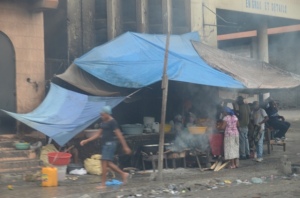
UMASS scientists also developed “The Bubbler” a filtration system wherein water is pumped into a freestanding concrete device and works its way through layers of filtration until it bubbles, clean and drinkable, out the top. The scientists’ goal is to convince enterprising Haitians to produce and sell The Bubbler, bringing the technology into the community. It has not been an easy sell. While the idea of The Bubbler was a hit, its packaging of dull gray concrete with a pipe sticking out was not. The Haitians we polled on the trip found it ugly, and didn’t want it in their homes. Luckily, on this occasion, help arrived in the form of UMASS Lowell Graphic Design faculty member Professor Ingrid Hess, who sought to re-design the exterior of The Bubbler, drawing inspiration from the colorful typography of merchant signs and street graffiti on Haitian streets. The hope is to create a new prototype, more attractive, and more likely to gain entry to Haitian homes.

Another UMASS Lowell faculty member, chair of Mechanical Engineering, Chris Nizrachi, sought to address the need for renewable energy in Haiti. With his business partner, Missy, he is developing a company to work along the lines of “Tom’s Shoes.” Selling merchandise, in this case T-shirts, they hope to provide renewable energy for homes in developing countries, one house for every T-shirt. They have developed a solar cell in a waterproof container that is tough, portable, and easy to install. Drawing energy from the sun, it can charge cell phones and power small devices. On this visit, they installed the first prototype into a Haitian home, delighting the homeowner, and laying the groundwork for a sustainable, affordable energy future in Haiti.

UMASS Lowell Physics Professor Silas Laycock and recent Physics grad Kate Oram chose a different tract for this trip, addressing the vital need for expanded education. They developed an activity-based curriculum for elementary school students in Haiti, and worked with two Haitian college students, Dayana Alabre and Ralph Douyon, to teach and implement the program in Haitian classrooms.
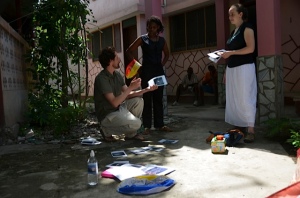
Arriving on the first day of school, the UMASS Lowell Physics education team reported to the Principal’s office. Father Leslie, the Catholic priest serving as principal of the school, greeted the team warmly, and so enchanted them, they did not realize until after they had left his office that he had doubled down on both the amount of students and the number of sessions, in his desire to include as many students as possible in this educational opportunity.

A high-energy week of science ensued. The Haitian school children were adorable and enthusiastic. The boys wore white shirts with plaid collars and navy shorts. The girls wore plaid jumpers, white blouses, and ribbons in their hair. The children’s eyes sparkled with intelligence and mischief.
They caught on quickly, they shot up their hands up to answer every question. They were inquisitive and playful, and they made the visiting scholars laugh with their wit and joie de vive.
The week started with the solar system:


Next came telescopes. Using cardboard tubes, plastic bottle caps and plastic lenses, each age group assembled telescopes. This activity was quite a hit, and no tripod needed!
Last, there was magneticism. Compasses were made with pins, water, cork, and bottle caps. Magnetic fields were demonstrated with iron shavings.
The UMASS Lowell Physics Education team had an exhausting, but thoroughly rewarding week. On the final day, Father Leslie held a Fete in their honor, with a beautifully prepared feast, and a heartfelt speech in English he had stayed up long into the night preparing. The team was moved, and wished for more time, more resources, to broaden the scope of the curriculum, to reach higher goals.
It was a sentiment echoed by all who travelled to the UMASS Lowell Center for Haiti Development Studies on this trip. Each individual felt grateful for the opportunity to contribute to the mission of the center, but was inspired by all they experienced in Haiti to want to do and give more.

